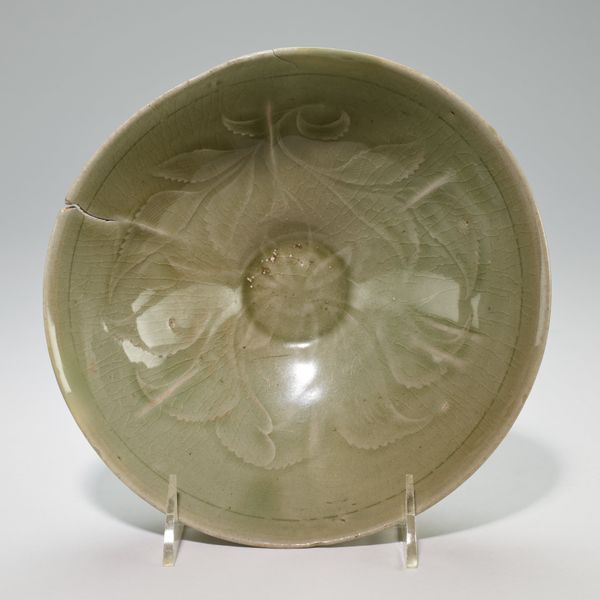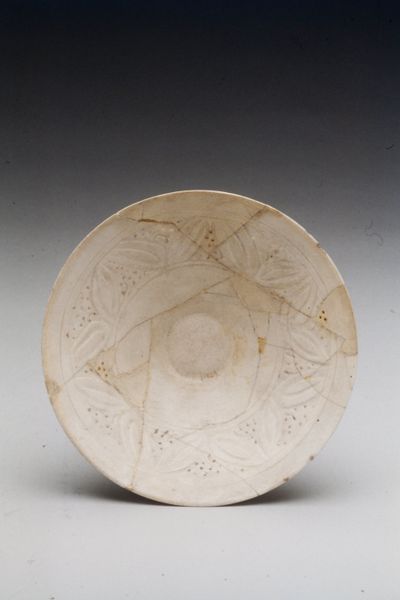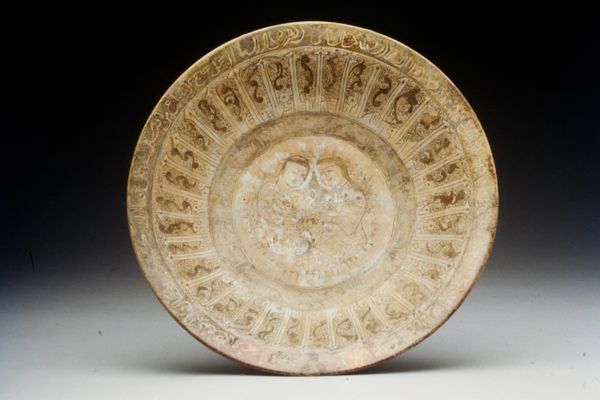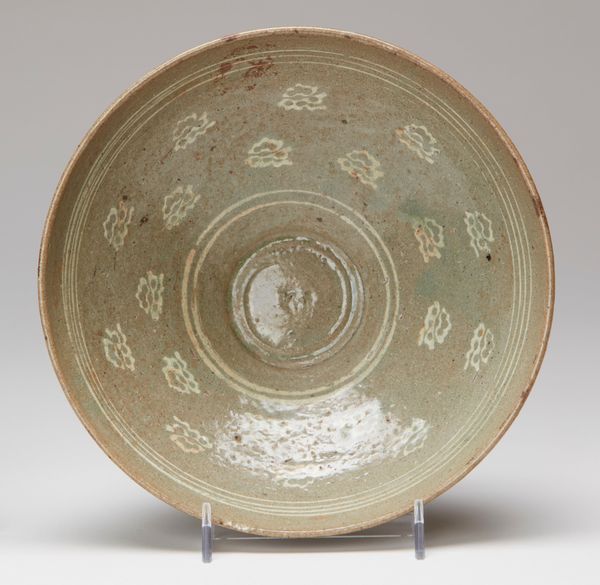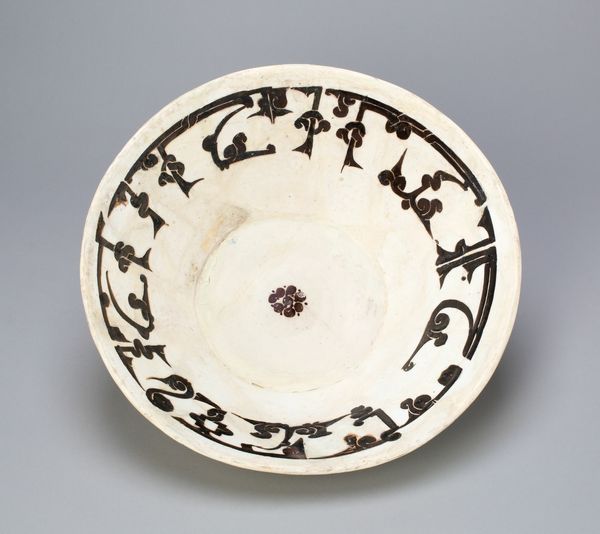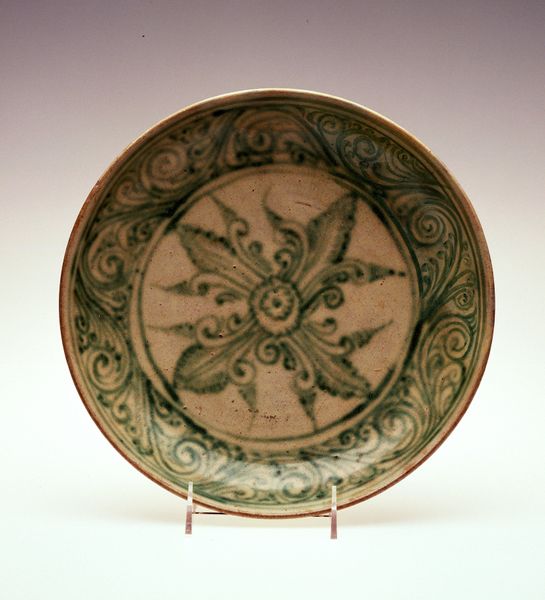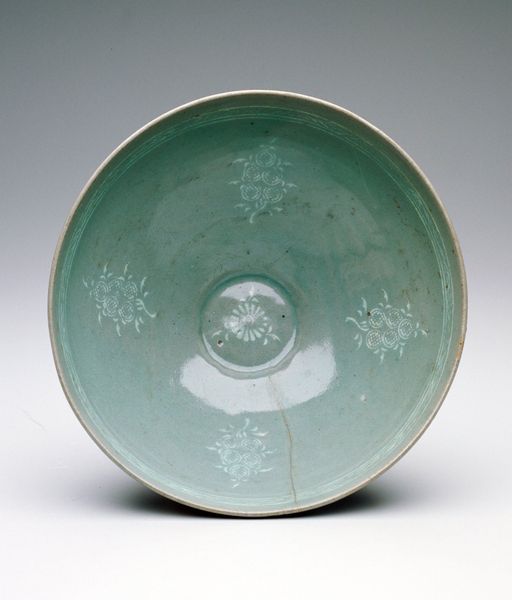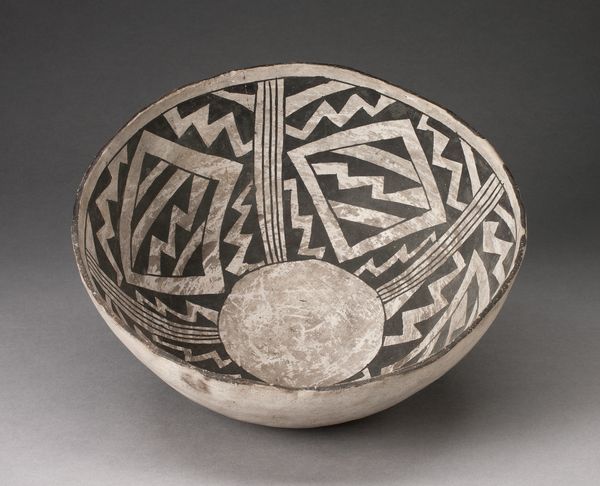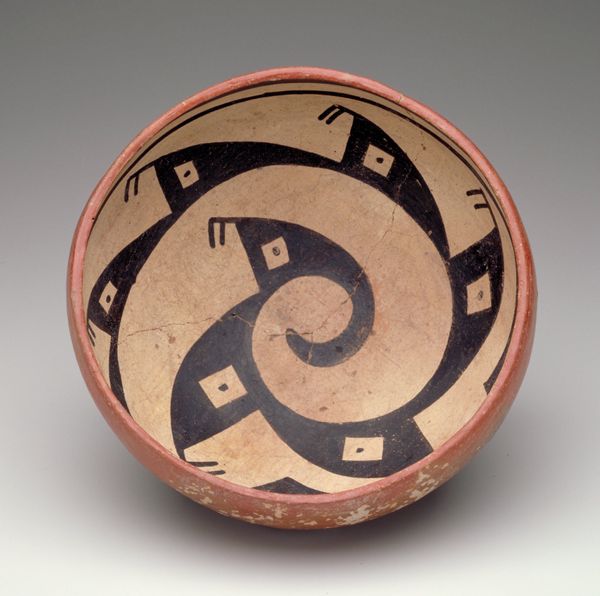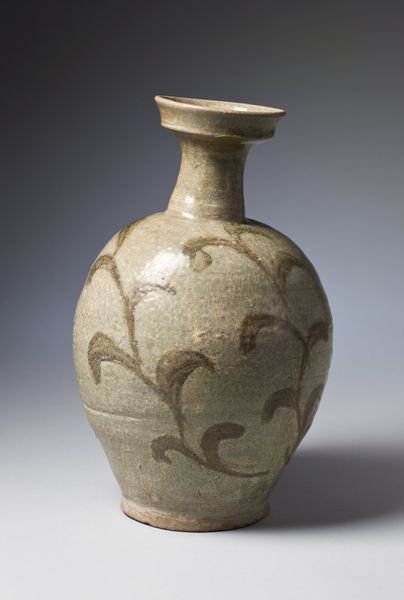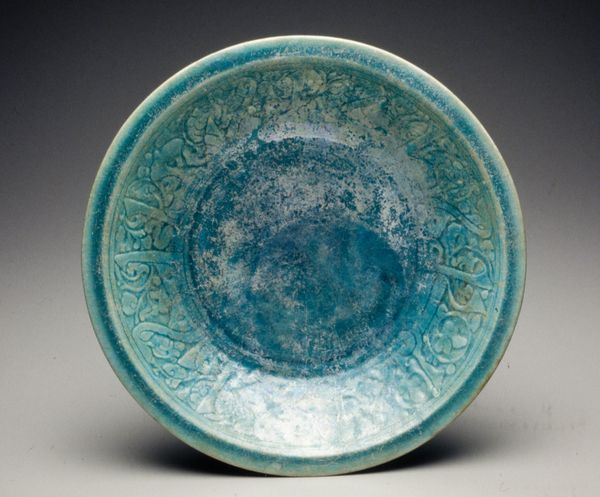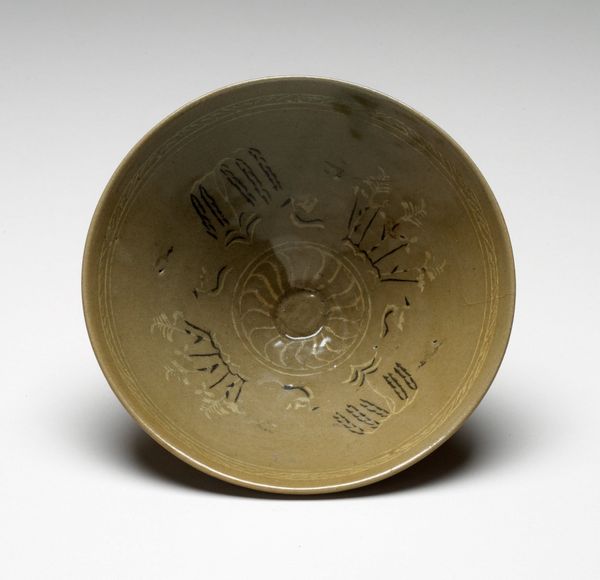
ceramic
#
ceramic
#
ceramic
#
abstraction
#
islamic-art
Dimensions: 2 7/8 × 7 1/2 × 7 3/8 in. (7.3 × 19.05 × 18.73 cm)
Copyright: Public Domain
Editor: This is a ceramic bowl featuring an abstract design. The Minneapolis Institute of Art attributes it to either the 15th or the 20th century. The dating seems broad, doesn't it? What’s your take on a piece like this? Curator: The ambiguous dating raises interesting questions about cultural influence and the role of museums in shaping perceptions of authenticity. A 15th-century bowl would situate it within a history of Islamic ceramic art and trade. A 20th-century date forces us to ask different questions about appropriation, pastiche, and modern interpretations of historical styles. What socio-political circumstances would lead to a revival of such designs? Editor: So, it’s less about “is it old?” and more about what its existence tells us, regardless of age? Curator: Precisely! If this bowl is, indeed, from the 15th century, how was it originally used, and who would have owned it? How did it find its way into a museum collection? Each of these factors would influence our understanding of the bowl and the cultures which gave rise to it. Editor: The museum classifies it as Islamic art. I'm curious, could a similar design have emerged independently in different cultures? How does a museum even decide which cultural bucket it falls into? Curator: Museums inevitably categorize objects, which in turn shapes their meaning and reception. Designs do travel and reappear in vastly different contexts, raising further questions. But the key to interpreting it lies in thinking about cultural exchange, power dynamics, and how our understanding of "Islamic art" is itself a constantly evolving, socially constructed concept. Does the abstraction itself relate to prohibitions on figuration in religious contexts, or are we imposing that idea onto the object? Editor: That’s something I hadn't considered. I thought about its design as being more organic and now realize how little I thought of how museums decide what label to give it, thanks. Curator: Indeed, the life of art objects continues far beyond their creation.
Comments
No comments
Be the first to comment and join the conversation on the ultimate creative platform.
